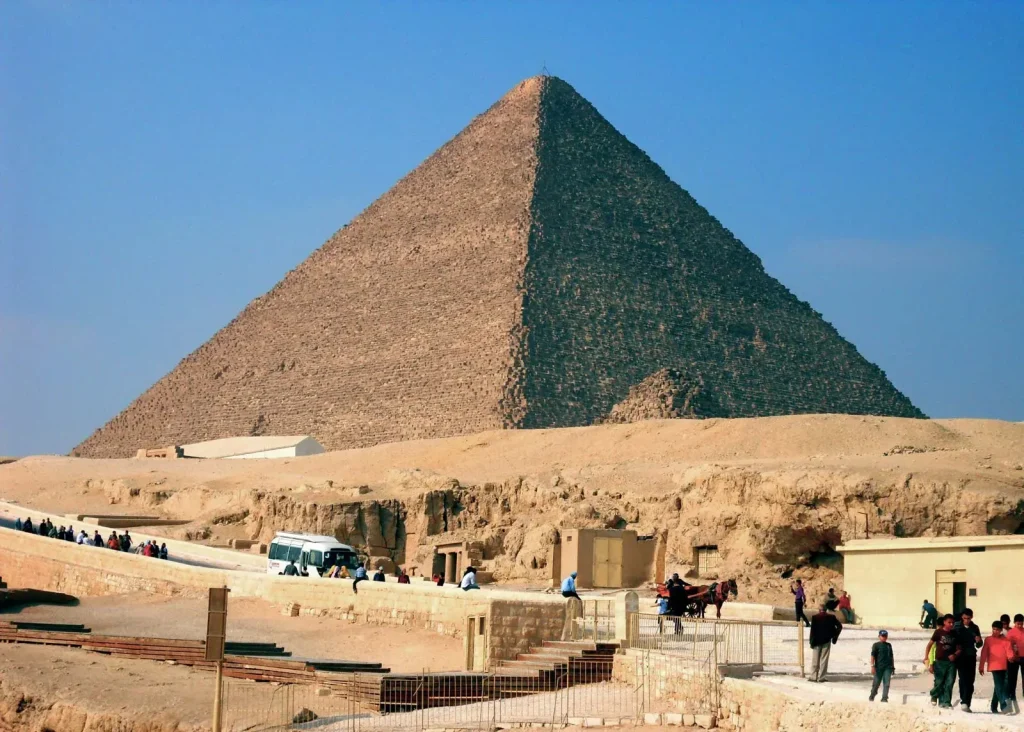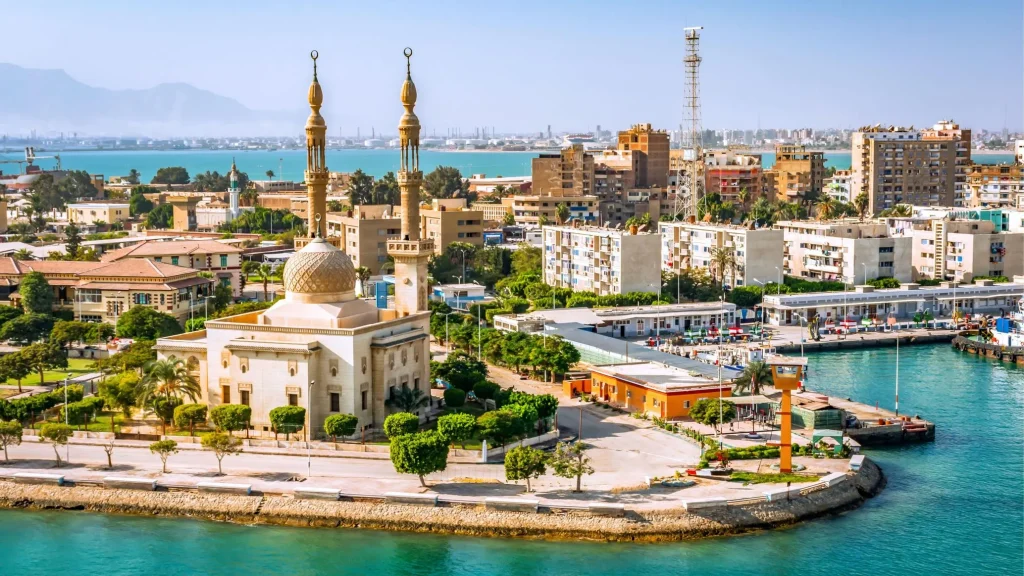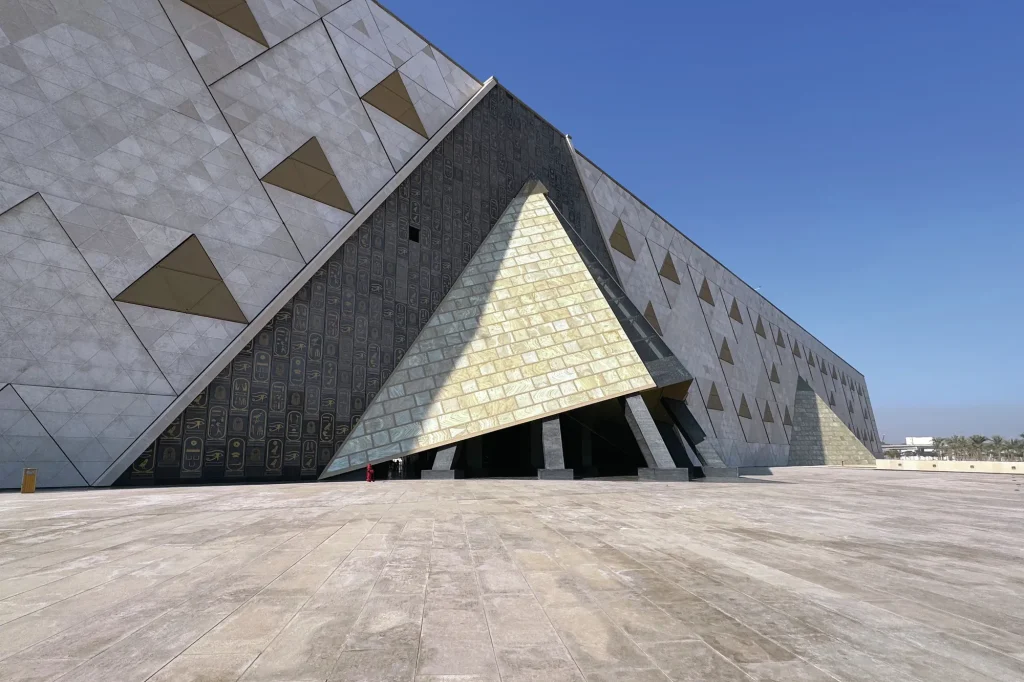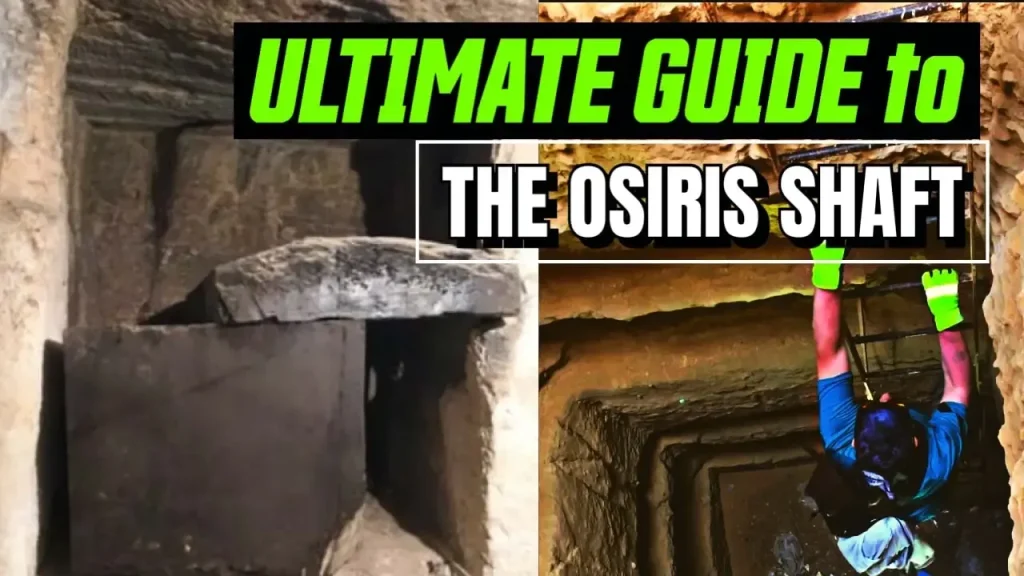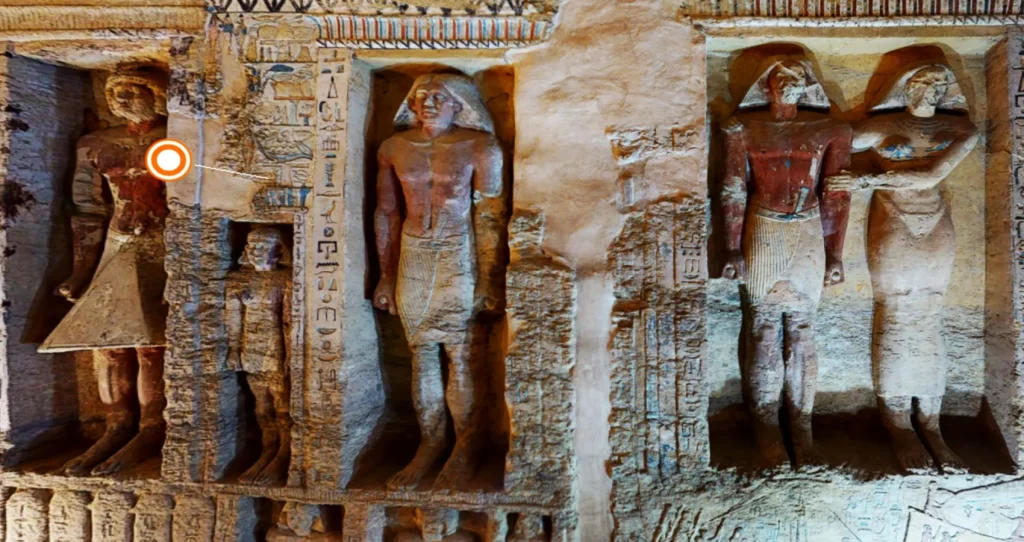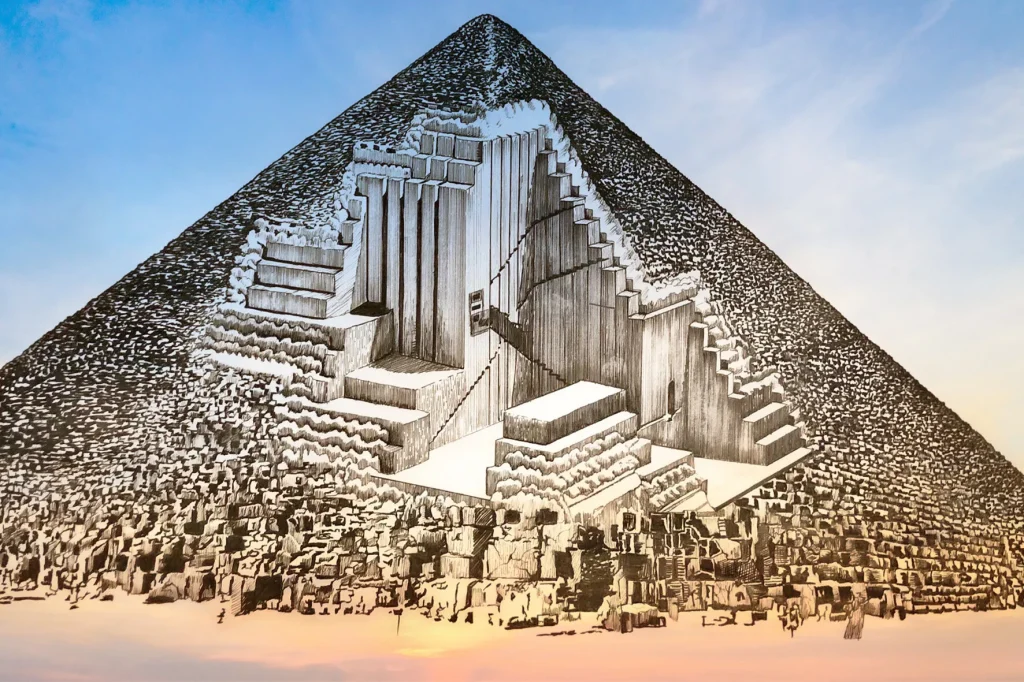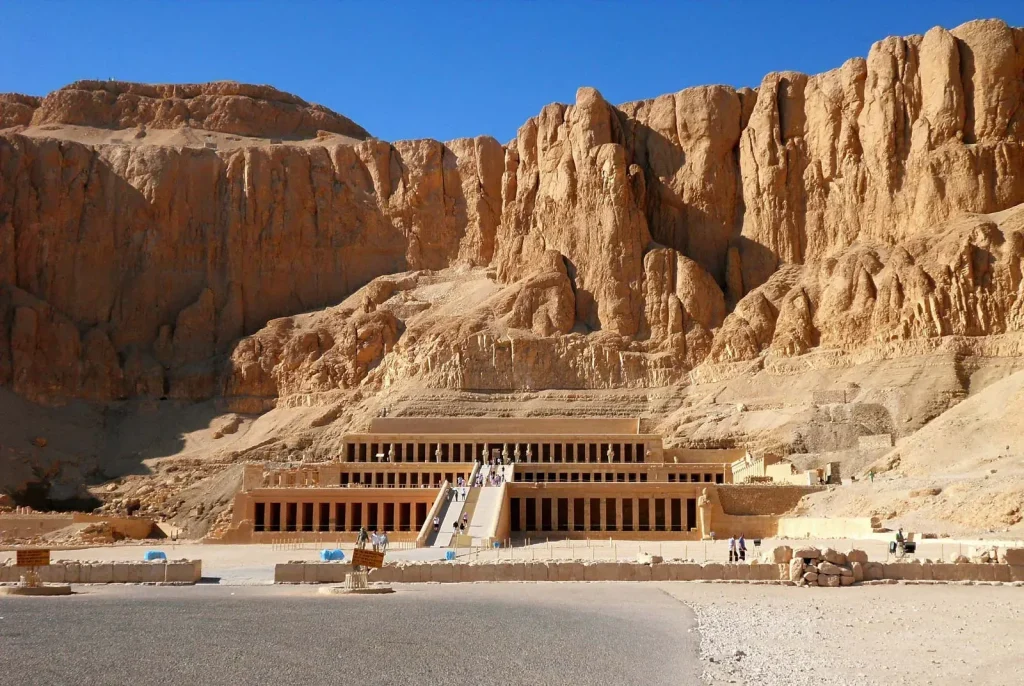The Giza Pyramids, located on the outskirts of Cairo, Egypt, are one of the most mesmerizing and enigmatic structures in the world. These ancient wonders have captivated the imagination of people for centuries, with their towering presence and mysterious purpose. In this article, we embark on a fascinating journey into ancient Egypt to uncover the secrets of the Giza Pyramids.
History and significance of the Giza Pyramids
The history of the Giza Pyramids dates back to approximately 2580-2560 BCE during the reign of Pharaohs Khufu, Khafre, and Menkaure. These majestic structures were built as tombs for the pharaohs and were believed to serve as a gateway to the afterlife. The construction of the pyramids required immense manpower and engineering skills, showcasing the advanced civilization of ancient Egypt.
The Giza Pyramids hold immense significance in understanding the culture and beliefs of ancient Egyptians. They were built with precise alignment to the stars, indicating the importance of astronomy in their society. The pyramids also symbolize the pharaohs’ divine power and their journey into the afterlife. The Great Pyramid of Giza, built for Pharaoh Khufu, is the largest and most iconic of the three pyramids, standing as a testament to the grandeur and ambition of the ancient Egyptians.
The construction techniques of the Giza Pyramids
The construction techniques employed in building the Giza Pyramids were nothing short of extraordinary. Massive limestone blocks weighing several tons were quarried and transported to the construction site. The precise fitting of these blocks without the use of mortar is a testament to the engineering prowess of the ancient Egyptians.
One theory suggests that the blocks were dragged up ramps using sleds and ropes, while another proposes the use of intricate systems of levers and pulleys. The exact method used is still a subject of debate among archaeologists and historians. The level of precision achieved in the construction of the Giza Pyramids is a testament to the advanced mathematical and engineering knowledge possessed by the ancient Egyptians.
Theories and mysteries surrounding the purpose of the Giza Pyramids
Despite centuries of study, the true purpose of the Giza Pyramids continues to elude researchers. Various theories have been proposed, ranging from astronomical observatories to energy-generating structures. Some even believe that the pyramids were built by extraterrestrial beings.
One popular theory suggests that the pyramids were aligned with specific constellations, serving as a link between the pharaohs and the gods. Another theory proposes that the pyramids were built to harness and channel cosmic energies for spiritual or practical purposes. While these theories are intriguing, they remain speculative, and the true purpose of the Giza Pyramids remains a mystery.
Exploring the inner chambers of the Great Pyramid of Giza
The Great Pyramid of Giza, the largest of the three pyramids, holds a multitude of secrets within its ancient walls. Inside the pyramid, there are several chambers and passages, including the King’s Chamber and the Queen’s Chamber.
The King’s Chamber is the main burial chamber, believed to house the sarcophagus of Pharaoh Khufu. The chamber is constructed with immense precision, with walls made of polished granite and a flat ceiling made of immense stone slabs. The acoustics of the chamber are also remarkable, with certain frequencies resonating throughout the space.
The Queen’s Chamber, despite its name, was not intended for a queen but rather served a different purpose. Its exact function remains unknown, but it is speculated to have had a religious or symbolic significance. Exploring these inner chambers provides a glimpse into the intricate design and purpose of the Great Pyramid.
The Sphinx: A guardian of the Giza Pyramids
Standing proudly near the Giza Pyramids is the enigmatic Sphinx, a mythical creature with the body of a lion and the head of a human. The Sphinx is believed to have been built during the reign of Pharaoh Khafre, serving as a guardian of the pyramids.
The Sphinx stands at an impressive height of 66 feet and is carved out of a single block of limestone. It has undergone extensive restoration over the years, revealing intricate details and a mysterious aura. The true purpose of the Sphinx and the reason behind its unique form continue to be subjects of speculation and study.
The Giza Plateau: A UNESCO World Heritage Site
The Giza Plateau, encompassing the Giza Pyramids and the Sphinx, is a UNESCO World Heritage Site, recognized for its outstanding universal value. The plateau is not only a testament to the architectural achievements of ancient Egypt but also holds immense cultural and historical significance.
Visiting the Giza Plateau allows you to immerse yourself in the rich history and marvel at the awe-inspiring structures that have stood the test of time. Walking in the footsteps of the ancient Egyptians, you can’t help but feel a deep sense of wonder and reverence for their achievements.
Unraveling the symbolism and spirituality of the Giza Pyramids
The Giza Pyramids are not merely architectural marvels; they are imbued with symbolism and spiritual significance. The shape of the pyramids, with their triangular sides, is believed to represent the rays of the sun, connecting the pharaohs with the divine.
The pyramids also reflect the ancient Egyptian belief in the afterlife and the journey of the pharaohs to become one with the gods. The inner chambers and passages within the pyramids are believed to have played a role in facilitating this transformation. Exploring the symbolism and spirituality of the Giza Pyramids deepens our understanding of ancient Egyptian culture and their unique worldview.
The Giza Pyramids in popular culture and tourism
The Giza Pyramids have captured the imagination of people worldwide and have become iconic symbols of ancient Egypt. They have been featured in numerous films, books, and artworks, further fueling the fascination with their mysteries.
Tourism plays a significant role in the Giza Pyramids’ modern-day prominence, attracting millions of visitors each year. Standing before these towering structures, visitors can’t help but feel a sense of awe and wonder at the sheer magnitude and beauty of the pyramids.
FAQ
How were the Giza Pyramids built?
The exact methods used in the construction of the Giza Pyramids are still a subject of debate among experts. Some theories suggest the use of ramps, sleds, and ropes, while others propose intricate systems of levers and pulleys.
What is the purpose of the Giza Pyramids?
The purpose of the Giza Pyramids remains a mystery. Various theories suggest astronomical, religious, or energy-related purposes, but none have been definitively proven.
Can you go inside the Giza Pyramids?
Yes, visitors can explore the inner chambers of the Great Pyramid of Giza, although access to certain areas may be restricted.
Conclusion
The Giza Pyramids stand as a testament to the ingenuity, skill, and beliefs of the ancient Egyptians. These majestic structures continue to captivate the world with their enigmatic presence and enduring legacy. Exploring the secrets of the Giza Pyramids takes us on a fascinating journey into the heart of ancient Egypt, unraveling the mysteries of a civilization that continues to inspire and awe us to this day.

